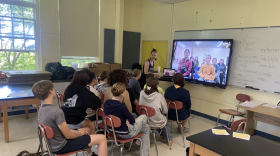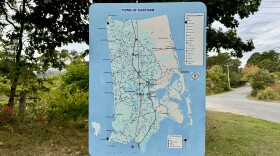-
This week Massachusetts rolled out a statewide strategy to help coastal communities protect residents, strengthen local infrastructure, and safeguard natural resources.
-
Provincetown and the Bearing Sea coastal village of Mertarvik are just about as far away as two places can be in the United States. But students in both communities have found one big piece of common ground — growing up in a rapidly changing climate.
-
Relocation of people and infrastructure is one of 10 strategies in a plan to cope with sea-level rise and storm surge. The Office of Coastal Zone Management is expected to finalize a report this summer.
-
The Cape Cod Commission is helping the town of Eastham develop a climate action plan.
-
The Environmental Protection Agency (EPA) has signed off on a long-planned experiment that aims to fight climate change by pulling carbon dioxide out of the atmosphere and storing it in the ocean for thousands of years.
-
Waterfront property has long represented the best of where you can live. But the changing climate — sea level rise and coastal storms — could be reshaping that idea. On Surf Drive, in Falmouth, is a property for sale with a great view and a lot of questions attached.
-
The Trump administration is laying off hundreds of scientists and weather forecasters with the National Oceanic and Atmospheric Administration (NOAA). In Woods Hole, where five major scientific institutions are based, and climate, weather and environment research is the culture and economy, the impacts are far reaching.
-
As Monday wore on, only one room of the 5,100 square-foot house remained: a great room, featuring soaring wooden beams, white shiplap walls, and a ceiling fan turning in the breeze. Once that room was demolished, the outer wall of the home – the one that faced the ocean – was finally torn down around 2:00 pm.
-
Locals share personal tales and agonizing choices tied to a worsening home insurance crisis in coastal Massachusetts.
-
Just hours after his inauguration on Monday, President Donald Trump signed an executive order halting new federal leases for offshore wind projects. He cited, as one reason, the impact offshore wind may have on marine life. “If you’re into whales,” Trump said, “you don’t want windmills.” Whale experts say the facts show otherwise.

Play Live Radio
Next Up:
0:00
0:00
Available On Air Stations










